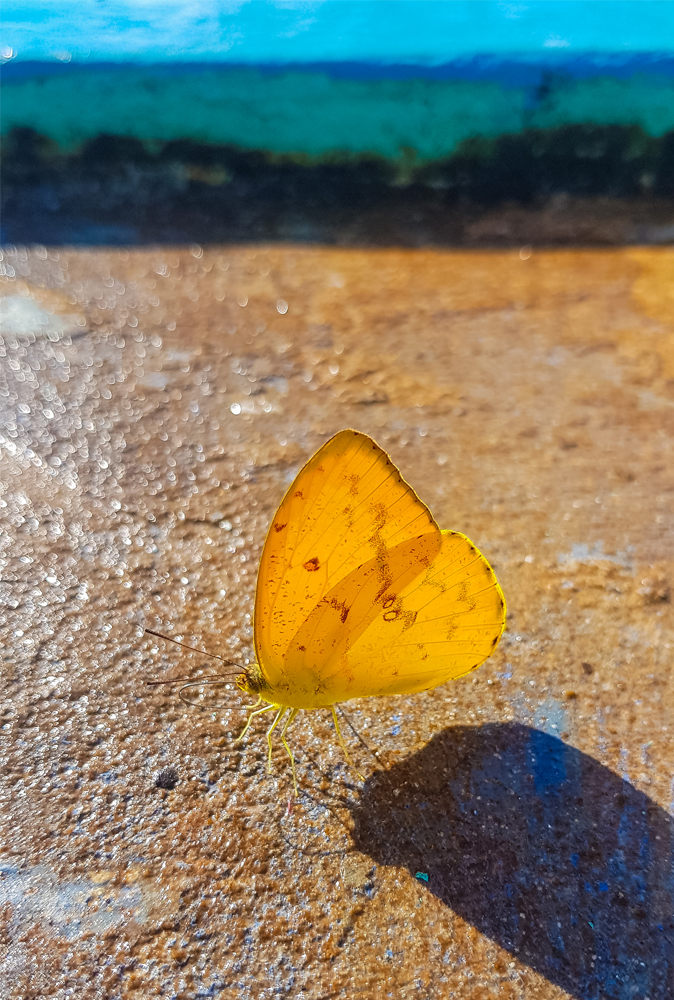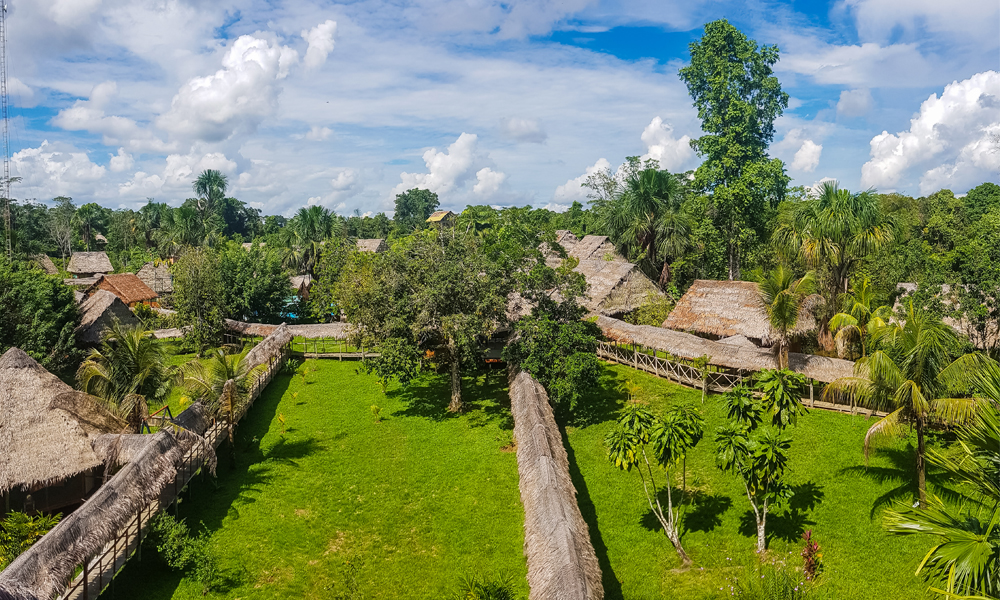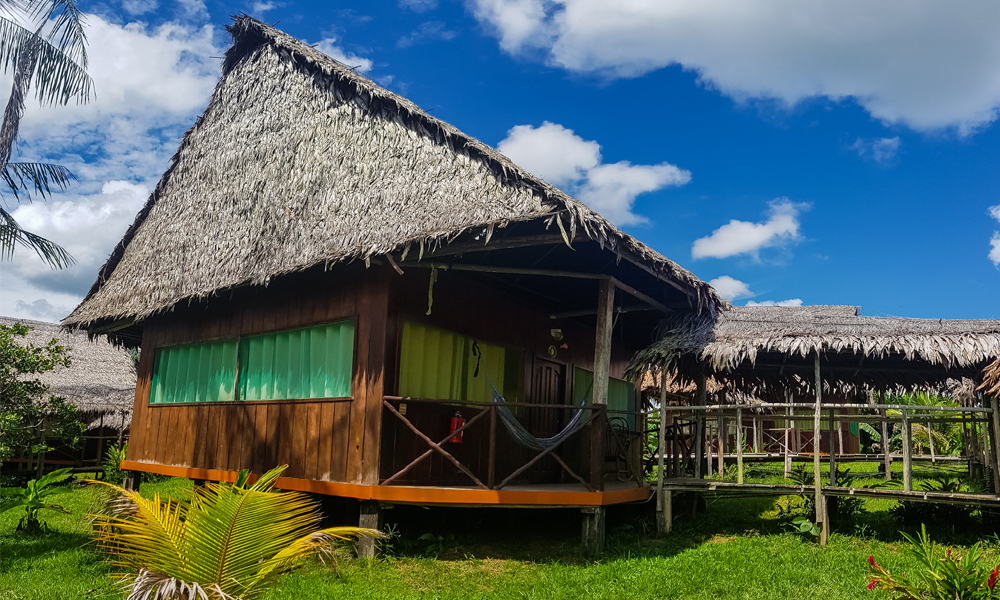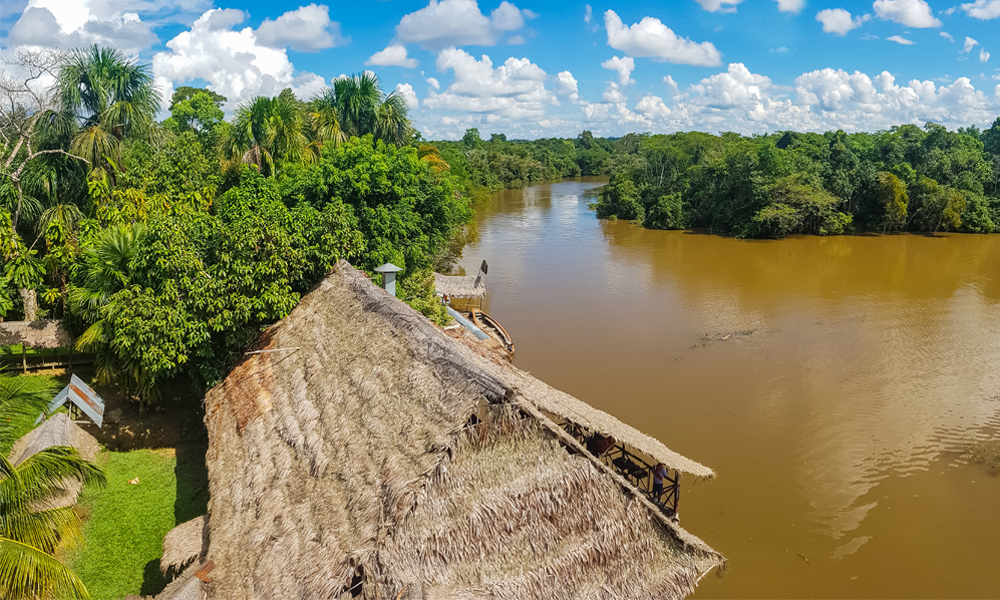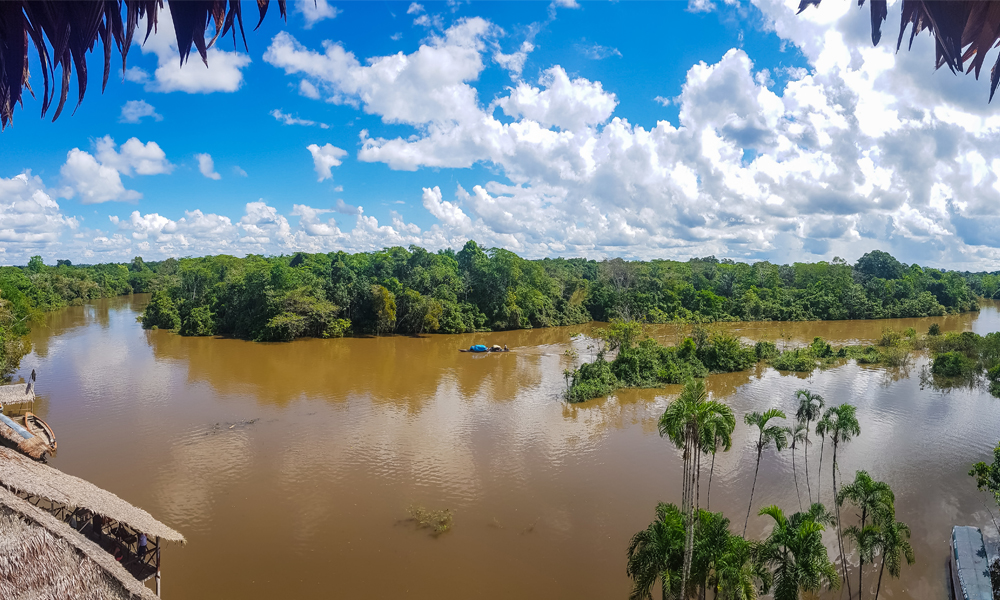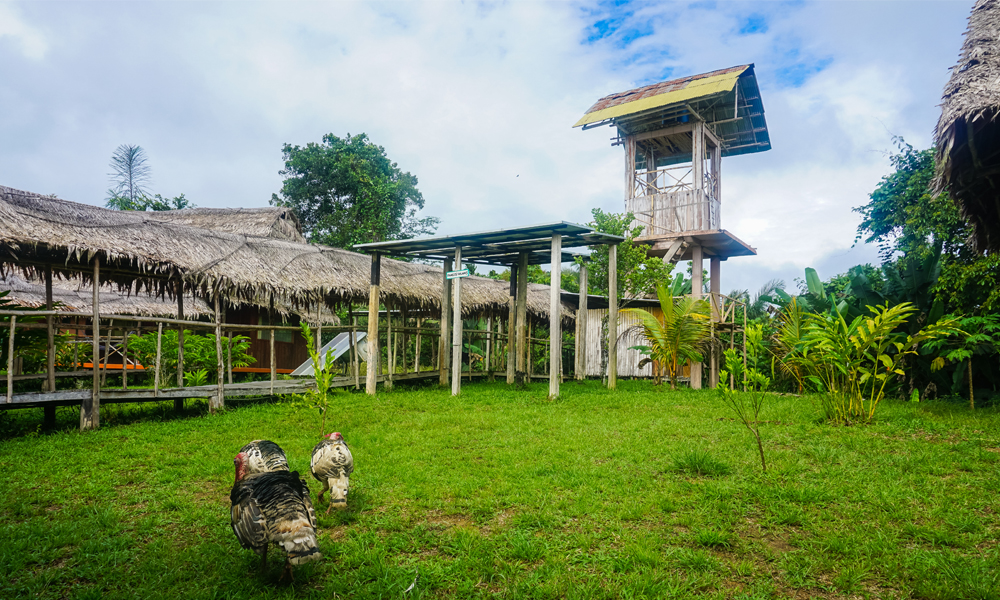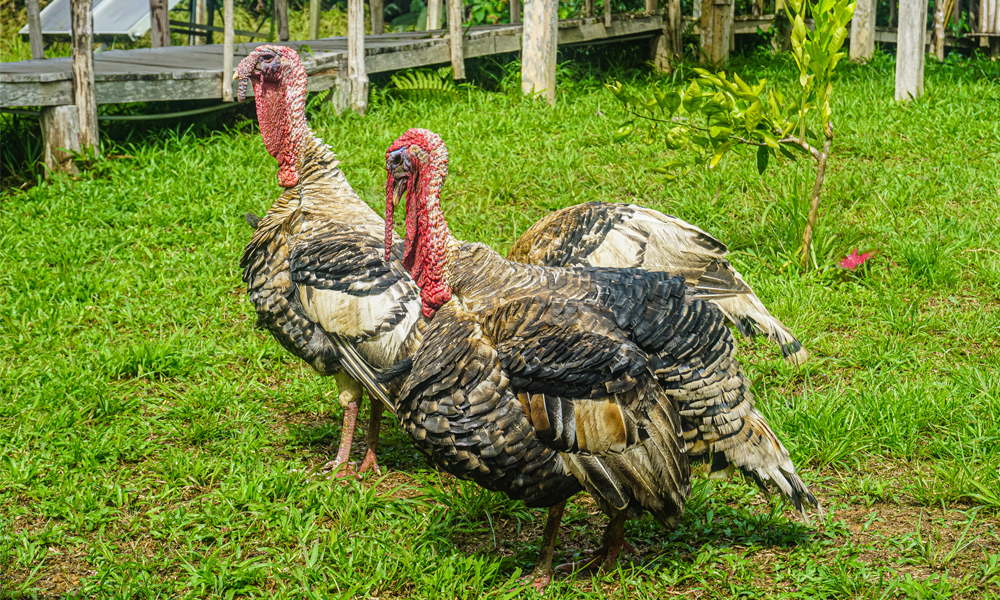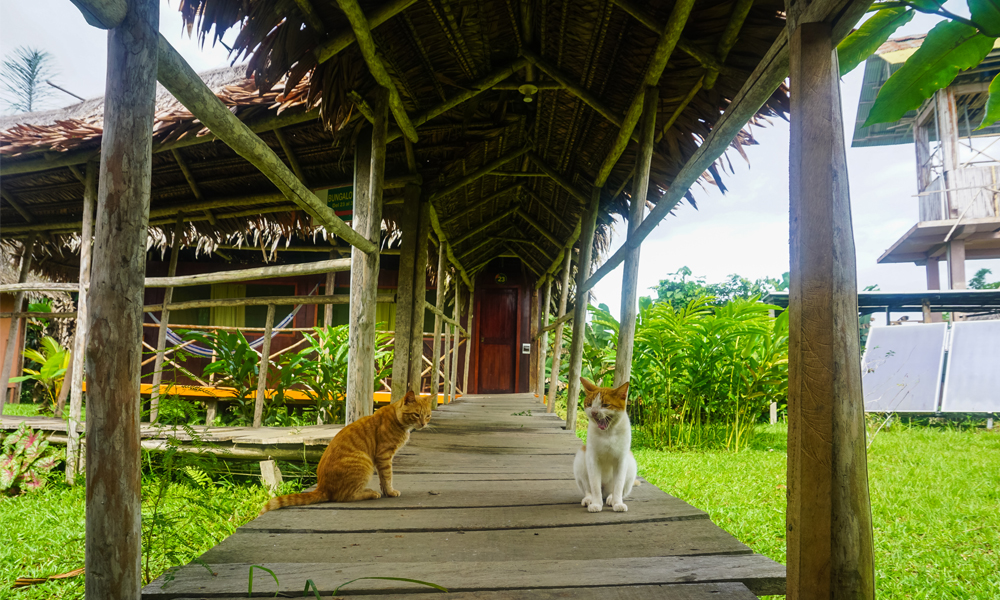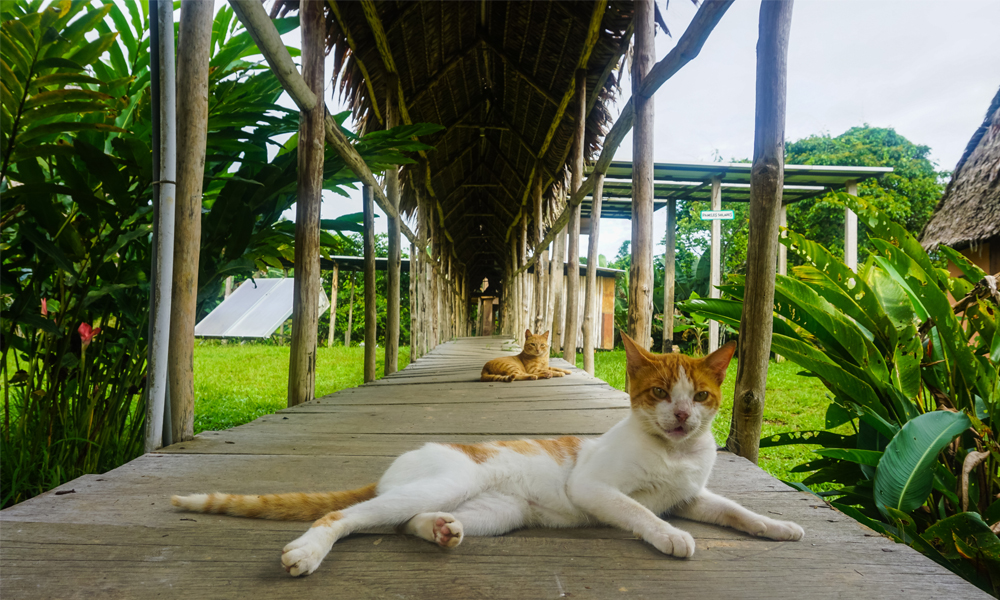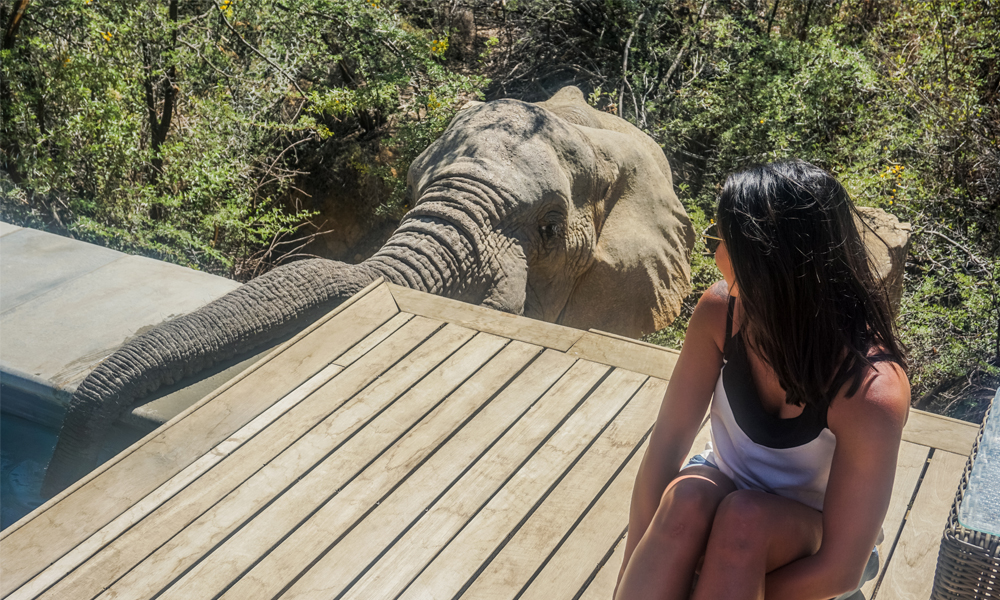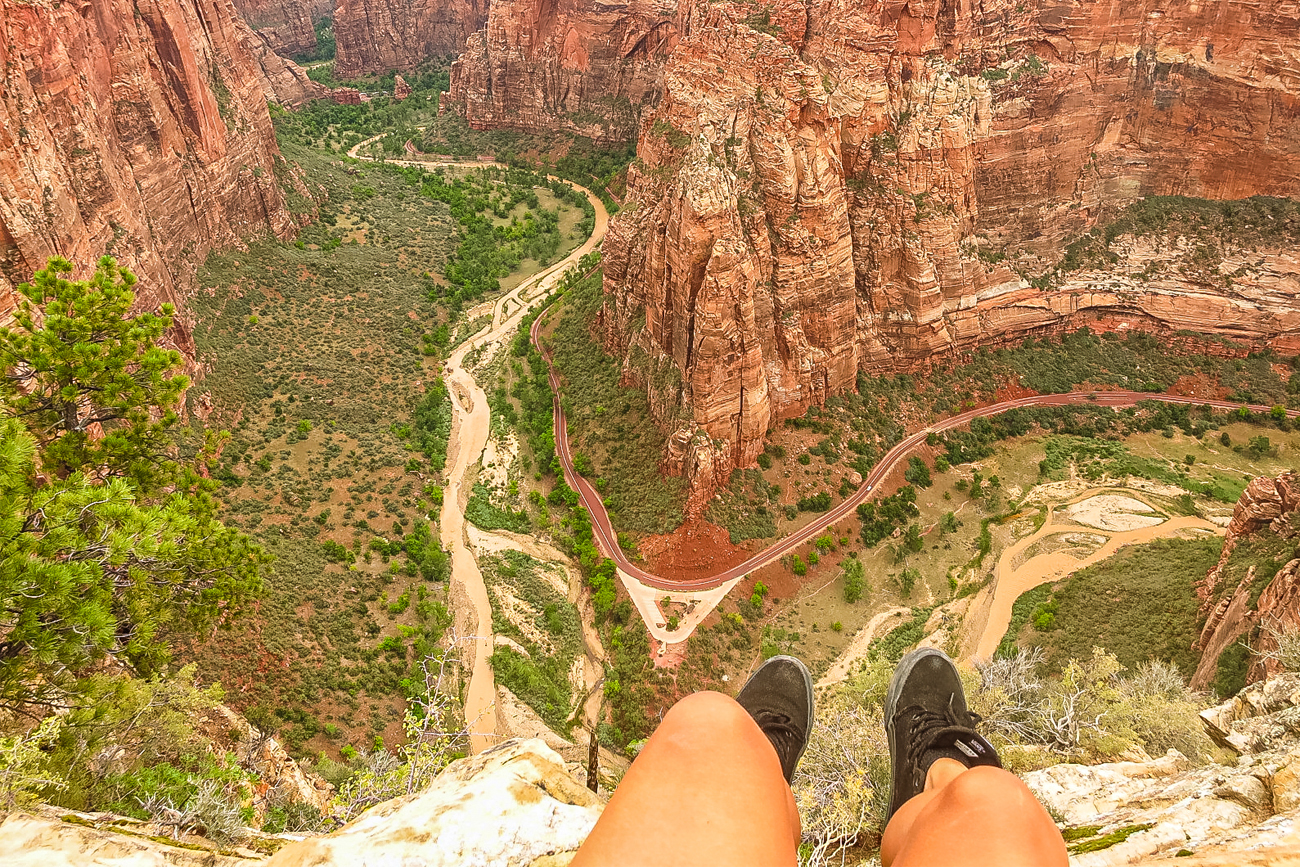WHAT TO EXPECT
If you’re aiming to escape the city, one of the best places in the world to do it is staying in the Amazon Rainforest! This is the true meaning of no frills getting back to nature, and staying at this rustic lodge further enhanced the jungle experience. The trip was full of adventure, from visiting the local river community to using a machete to clear the paths through the forest! During our stay there were hardly any guests, so the whole trip was quite peaceful and we felt like we had the whole place to ourselves. This was probably one of the most memorable trips we’ve been on and we hope to be able to explore other parts of the Amazon in the surrounding countries. Don’t come here expecting any fancy facilities because it’s not for the fainthearted or high maintenance travellers!
Amazon treks
Visit To Local Villages
An Insight To Amazonian Animals And Insects (my fave!)
Digital Detox - No WiFi + No TV
Eco Tip 17: Always refuse plastic straws, one of the simplest tip to do! There are many sustainable straw types out there including metal, bamboo and paper.
GETTING THERE
Iquitos is known as the capital of the Amazon and is the largest city in the world without any roads leading to it. Therefore it is only accessible by flying or by boat. We took a 2 hour flight from Lima to Iquitos. Depending on the season, you can find flights for around £30 so you could potentially be landing a good deal! As we landed late at night, we booked ourselves a room close to the airport so we didn’t have to travel too far after the flight. The guide picked us up early in the morning around 7am after breakfast. Heading towards Bellavista port, we passed the fascinating jungle metropolis with historical roots in the rubber boom. The boat was docked at the harbour and from there it was a 45 minute journey up the Nanay and Momón rivers. This is where the two rivers meet; the Nanay river being black water and the Momón with brown water. Occasionally you’re able to spot pink or grey dolphins in this river but we weren’t fortunate enough to see any! The ride did seem quite long, however watching the rainforest scenery made it all interesting!
THE LODGE
The place is quite big and you arrived at the main building that has a restaurant and viewing tower where you’re able to see the whole view of the river. Upon arrival we were greeted with a welcome drink made of local tropical fruits. The Amazon climate is very humid so this drink seemed like a lifesaver! Our guide explained the activities and gave us some time to settle in and enjoy the facilities of the lodge. Each guest stays in their individual cabin which are separate from the main entrance building. They’re actually really spacious inside but only have a fan with no A/C so be pack some really light night wear! The bathrooms were clean however don’t expect the water pressure in the shower to be the same as a hotel, you’re in the jungle! Each cabin has their own hammock outside with views to the pool or the gardens. The grounds are beautiful, and you’ll be surrounded by wildlife sounds all day. They even have wild turkeys roaming around!
The transfer is not available after 3pm due to the journey along the river. There are floating logs here and the driver of the boat may not be able to see them at dusk or night time. We’d recommend you stay in a hotel the night you land (as we did) and ask the lodge to pick you up from there in the morning.
FOOD + DRINK
The food was included in the lodge booking, except for the drinks which were an extra charge. It was always delicious and served in a buffet style for dinner, with a wide variety of local foods. There was a good selection of vegetables, chicken, fish, beef and we also got to try crocodile! There are plenty of options for vegetarians too, including yuca, which is native to South America.
WHAT TO DO
There is so much to do and learn here about local culture and biodiversity. It’s such a remote part of the world and with no 4G here, you’ll soon realise how much entertainment you can really get from nature.
Visiting the river communities of Gen Gen and Centro Fuerte - Learn abut the customs ad habits of the mestizo people who live on the riverbanks of the Amazon region. They're happy for you to get involved with them and play a game of football!
Chullachaki Botanical Garden - The owner will give an explanation about medicinal plants growing in this incredible garden
Observe The Birds - Wake up at the crack of dawn (5.30am) for an hour long canoe ride up the rice to enjoy the great variety of bird life. Many bird species of the Amazon are active at this hour feeding on fruit trees and diving into the river to catch small fish
Go for a night time boat ride - Experience the sounds of the nocturnal wildlife of the Amazon
Visit Barrio Florido - A small village where you'll be able to come in close contact with alligators and other regional fish
Music Jungle Jam Session - Get musical and learn how to play a variety of local acoustic instruments that they keep at the lodge
Go Piranha Fishing - Visit a private reserve where you'll get the chance to ride on a wooden boat and catch your own piranha. Here you'll also see the Victoria Regia, one of the largest waterlilies. They grow up to 1 metre in diameter and bloom from March to July.
TOP SUSTAINABLE PRACTICES WE LOVED
01
Using renewable energy and biodegradable resources whenever possible
02
Power was only generated during certain hours to allow you to charge your electrical devices
03
Food is locally sourced from the farmers and fisherman nearby
04
All staff is native to the area and has a broad knowledge of the Amazon
Avoiding The Tourist Traps
Animal Encounters
As part of our tour, we were taken to a Serpentarium where a local Peruvian man had a collection of wild animals. This was meant to be a ‘fun jungle experience’ but we felt it was unethical. There were anacondas, monkeys, sloths and jungle cats all in really confined spaces and apparently they were there for rehabilitation. We just saw this as a spot for tourists to visit on their tour and for them to collect their tips for the ‘free tour’. We felt so disheartened when we saw this and only gave a minimal tip just for the man’s time. Everyone needs to make a living but without harming others in the process!
Local Tribes
As much as we love wildlife, we also love to see how the local communities live and get an insight into their lifestyle and this was the main reason why we chose to visit the Iquitos side of the Amazon over the other areas. The tour guide took us to visit the Alamas Indigenous Tribe. This seemed like a great experience but because it was just the two of us, we felt a bit uncomfortable sitting there watching them dance. At the end of it they offer their homemade handicrafts made out of local plants, seeds and wood from the area. These are great to support the local community and prices started from around £1 for a bracelet. The products were all cheap enough so we felt it was offensive to haggle here as this could potentially be their only income. This isn’t necessarily a ‘tourist trap’ but we were told by the guide later on that they weren’t the real Indigenous tribes, they were just there to represent them and show tourists their traditional rituals. The whole time we thought we were actually visiting a genuine tribe only to find out they were locals dressed up! Moral of the story is, when you book a tour make sure you ask them how Indigenous the tribe really is, or if they’re representing. It was still interesting to see but we felt a bit mislead by it all.
Handy tips from an Amazonian local
After spending so much time with our guide, we really got to know him as a person and his knowledge of the biodiversity was outstanding! He was able to teach us facts in a very interesting way and his passion for the Amazonian life really came through when he was explaining things. Here are a few tips he gave us which we found useful!
Use long rubber boots instead of trekking shoes to protect legs from snakes trying to bite
Wear light coloured clothes as black/dark colours attracts mosquitoes
Do not touch trees as it can be toxic, spiky, or fire ants walking
Do not pick up things from the ground without first checking snakes or other harmful animals
Do not set out on your own just for a walk or to use the toilet as you can get easily disoriented. Speak to the guide first and let them know where you're going
Go during high water season between the months of December to May. This way you'll get the full experience of the boat ride down the river, otherwise you may have to walk through certain areas.
What to pack for the Amazon
A natural mosquito repellent
We love Effitan Insect Protection Spray which is made from plant based ingredients.
Good walking shoes (or rubber boots as recommended by our guide!)
Sunglasses
Suncream - Although we're not swimming, we always pack a reef safe sunscreen that doesn't damage any marine life.
The Great Barrier from Tropic smells amazing and doesn’t leave our skin feeling oily.
Camera (with extra batteries and plenty of space of your memory card)
Torch to use at night time (the guide will have one if you forget it)
Swimming costume (for the pool at the lodge)
Binoculars for wildlife watching
Poncho or light rain coat with a hood - You won't want to pack anything too heavy because it will be humid.
Reusable water bottle
We don’t go anywhere without our Grayl water bottle that purifies any water to make it drinkable!
Any spare items you may have lying around to bring to the local village people. Gifts such as books, stationery, clothing and old toys are greatly appreciated by them.
FEMALE AND SOLO SAFETY RATING – 3.5/5
In the past years there have been a few kidnappings around the Brazilian side of the Amazon but there have been minimal reported cases from Iquitos. The city has limited infrastructure and this shows through their local communities where piracy is quite common. Being in the jungle did feel safe, although as it’s such a vast piece of land, it’s not easy to keep an eye and control who or what is lurking around. With that being said, during our trip we felt completely comfortable and had no worries about safety. We’d 100% recommend getting a local guide to take you around because they’re able to navigate through the Amazon easily and will also share local knowledge about wildlife, medicinal life and their way of living.
Learn more in related article: Trekking Through the Amazon
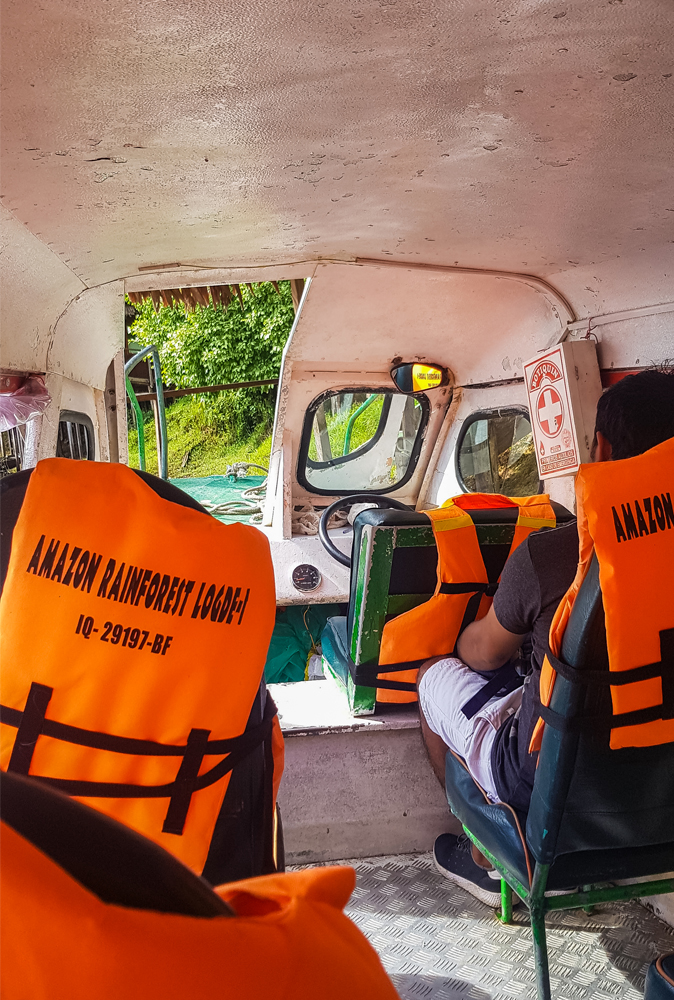
The boat transfer to take us to the Lodge
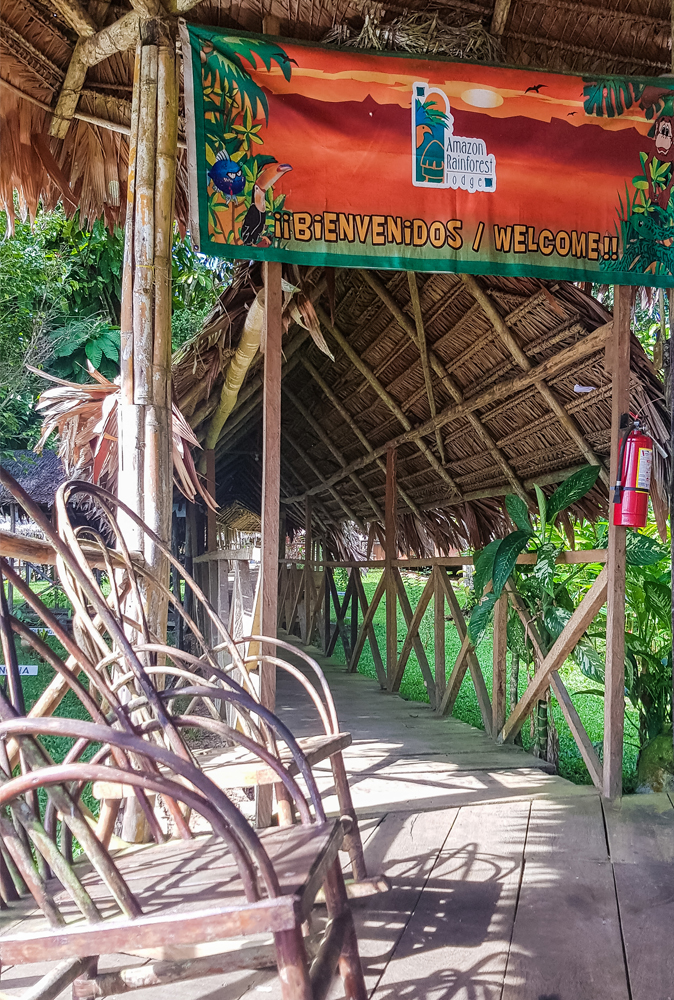
Bienvenidos a Amazon Rainforest Lodge!
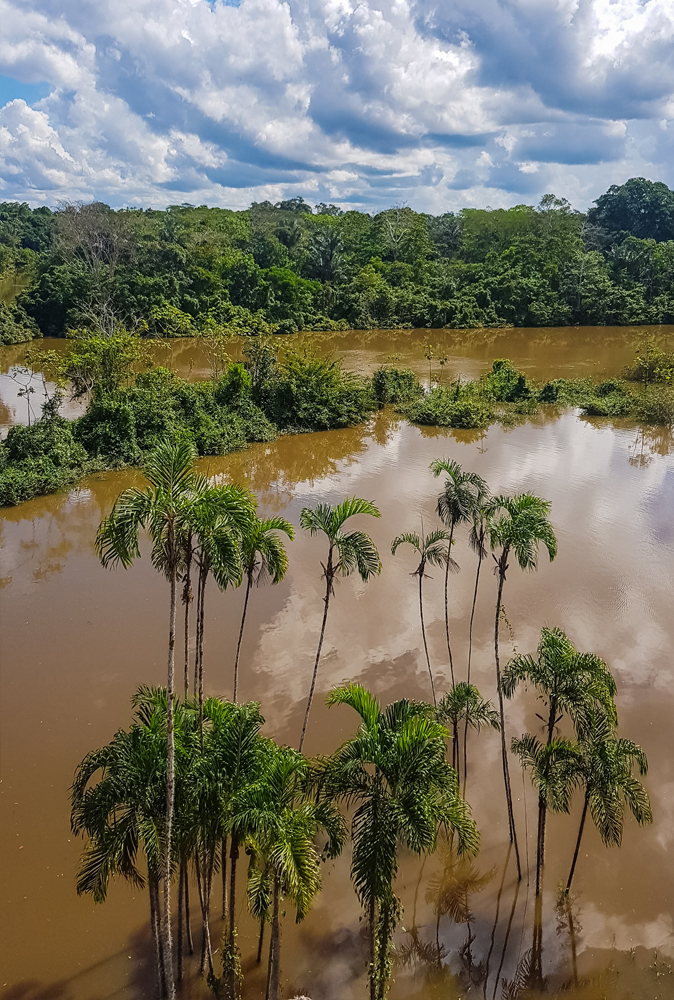
Trees in the Amazon can grow up to 200 feet!
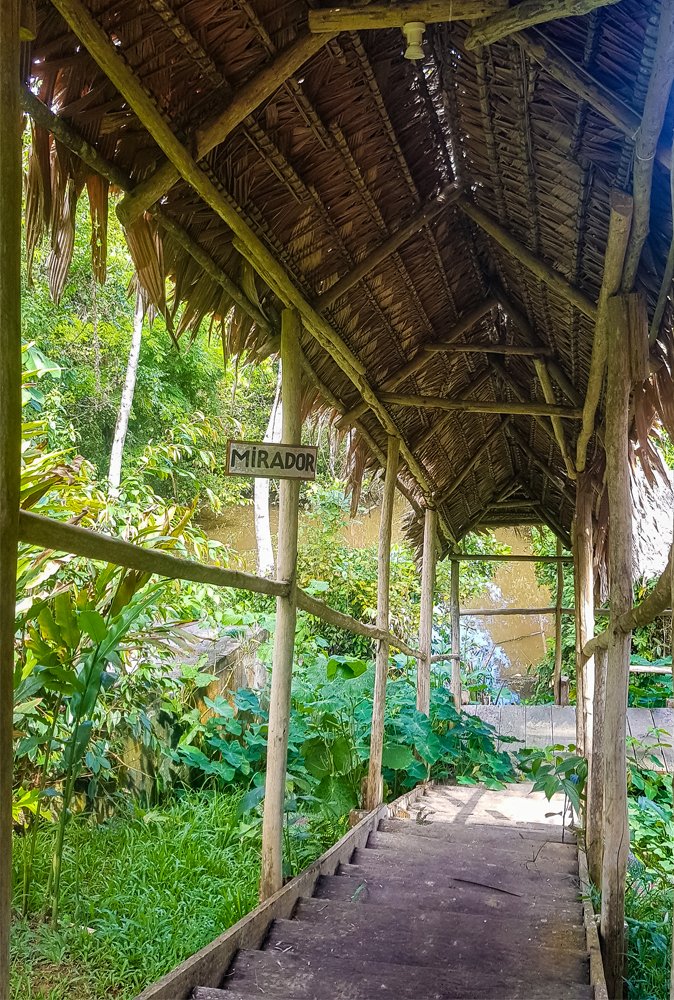
Walkway to the viewing platform
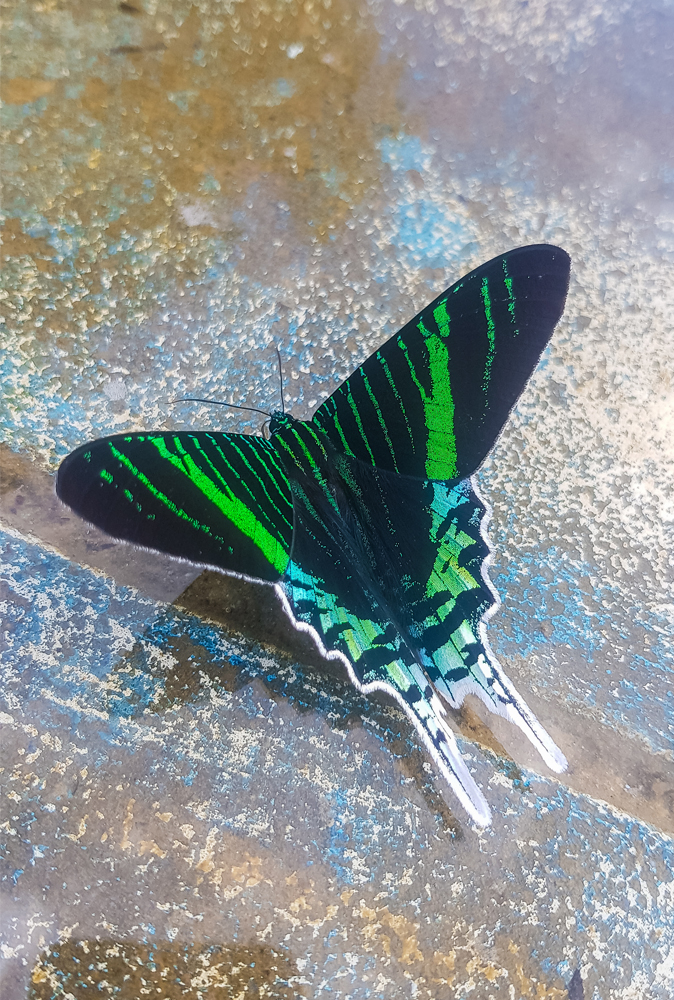
Took a lot of patience and effort to get this close up of the butterfly!
